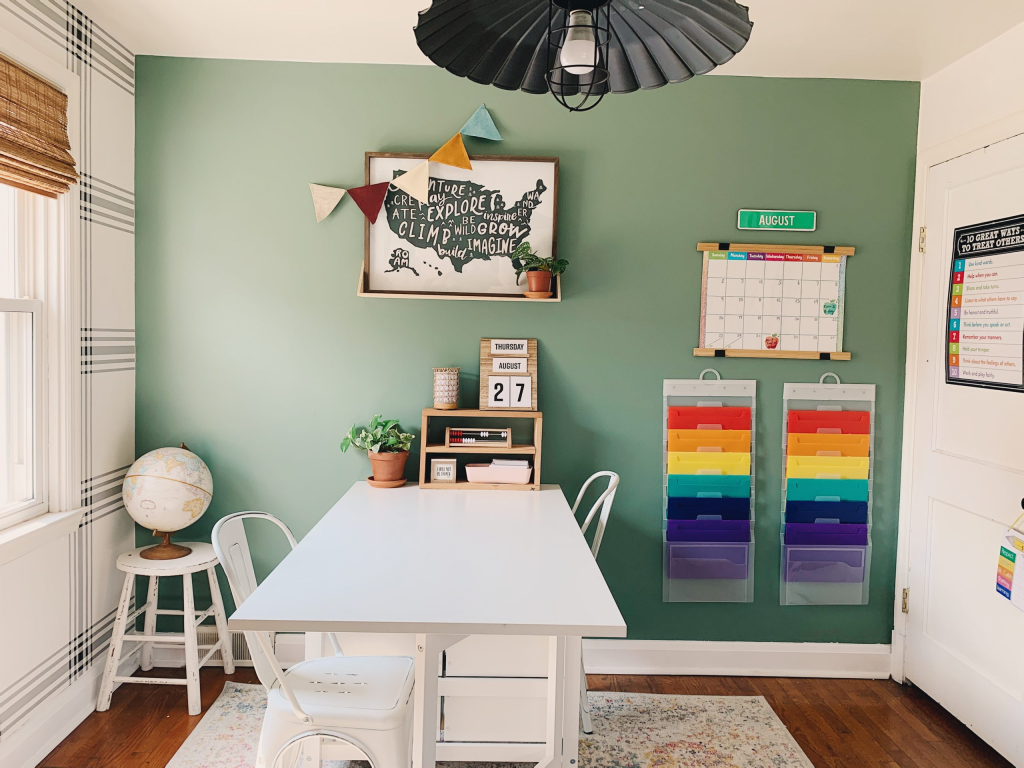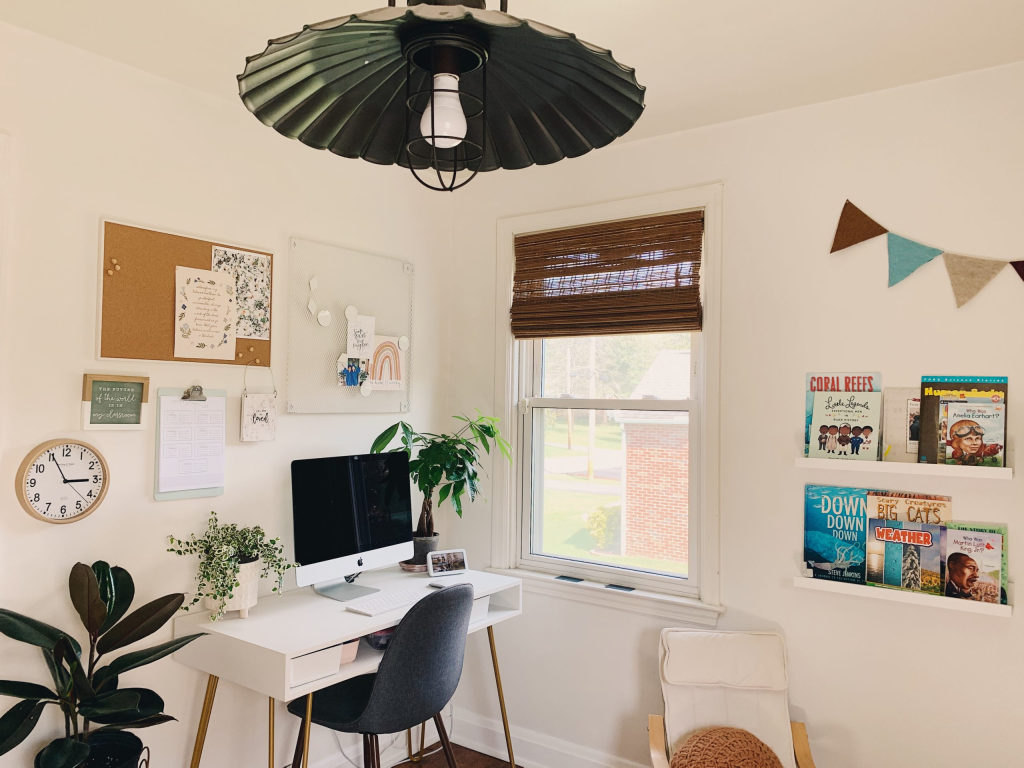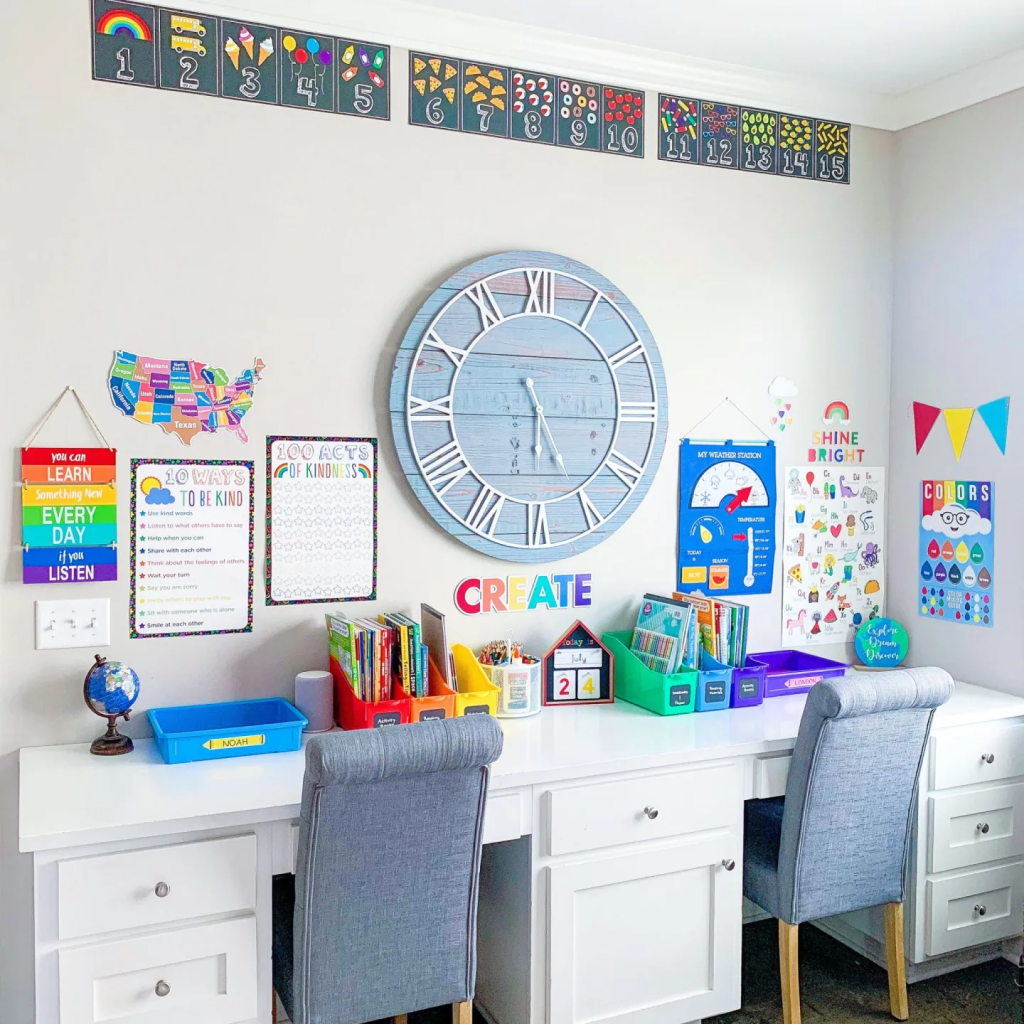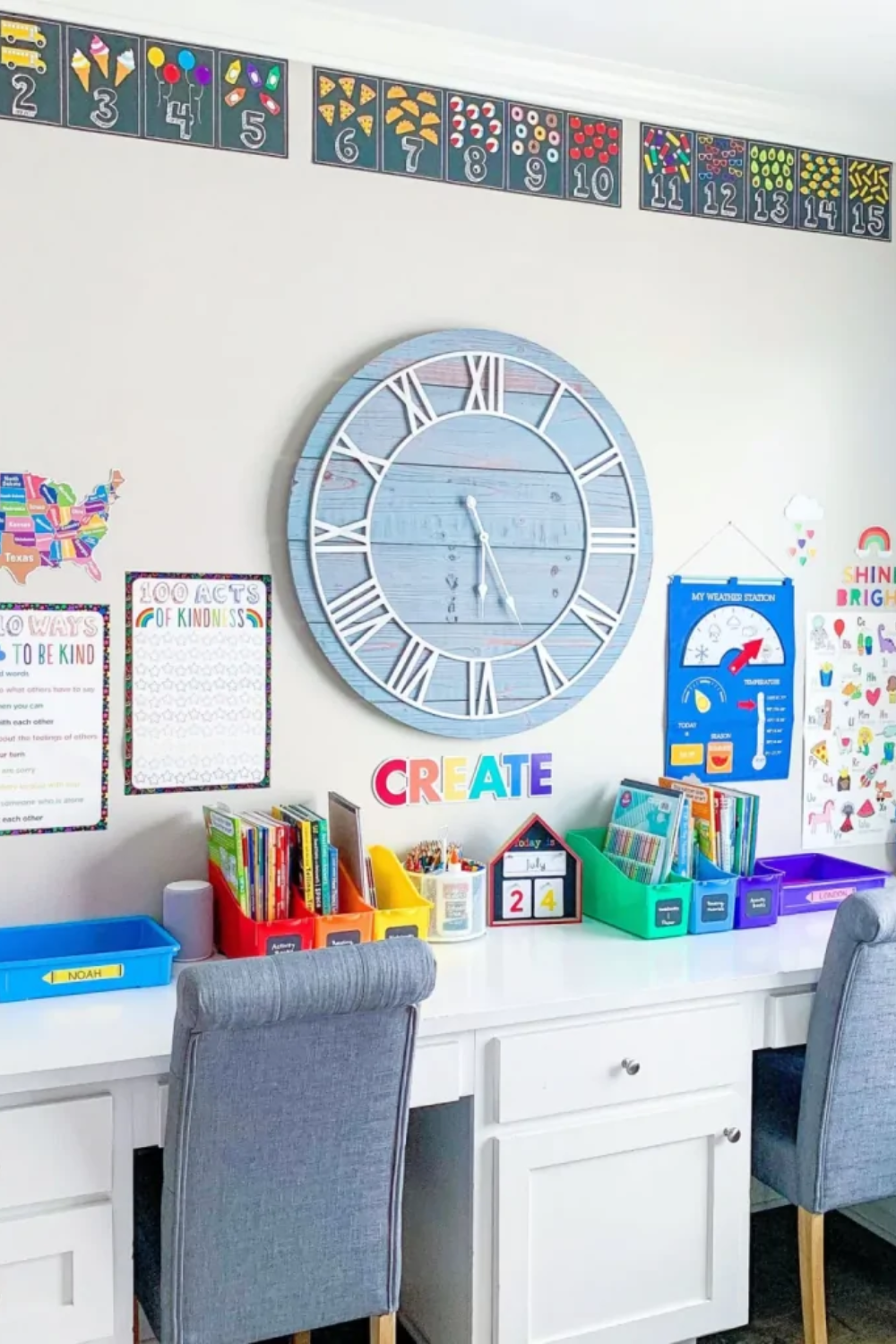The rise of homeschooling has reshaped how families approach education—and it’s no longer just about textbooks and lesson plans. A well-designed homeschool room can be the difference between distracted chaos and engaged, joyful learning. Whether you’re converting a spare bedroom or claiming a corner of the living room, intentional design fosters focus, creativity, and independence. In this guide, we’ll dive into 10 transformative homeschool room ideas to optimize your space, backed by insights on why structure matters and how to sidestep common mistakes. Let’s build a learning environment that grows with your child’s curiosity!
Also check out;-
Conducive Craft Room Ideas
Eye-opening Game Room Ideas
10 Ready to Go Homeschool Room Ideas










Extra Tips:
Benefits of a Dedicated Homeschool Room
- Enhanced Focus & Routine
A designated space signals “time to learn,” reducing distractions from household noise or clutter. Consistency builds routine, helping kids mentally transition into “school mode.” - Tailored to Learning Styles
Customize the room to suit your child’s needs: kinetic learners thrive with flexible seating, while visual learners benefit from wall charts and color-coded supplies. - Streamlined Organization
Dedicated storage for books, tech, and art supplies cuts time wasted hunting for materials. Pro tip: Use clear bins for frequently used items! - Ownership & Independence
Kids take pride in a space designed for them. A “student workstation” with their own supplies encourages responsibility and self-directed learning. - Separation of Spaces
Physically dividing “school” from “home life” helps prevent burnout. After lessons, kids can mentally “leave the classroom” and recharge.
Common Homeschool Room Mistakes (and How to Fix Them)
- Overcrowding the Space
Mistake: Stuffing the room with too much furniture or decor.
Fix: Embrace minimalism. Use multi-functional furniture (e.g., a storage bench that doubles as seating). - Ignoring Ergonomics
Mistake: Uncomfortable chairs or poorly positioned screens.
Fix: Invest in adjustable desks and chairs. Ensure screens are at eye level to prevent neck strain. - Poor Lighting
Mistake: Relying solely on harsh overhead lights.
Fix: Combine natural light with soft lamps. Add a daylight bulb for cloudy days! - Neglecting Student Input
Mistake: Designing the room without involving your child.
Fix: Let them pick a theme, art, or a cozy reading spot. Ownership boosts engagement. - Static Design
Mistake: Treating the room as a “finished” project.
Fix: Reassess the layout quarterly. Swap out decor or storage as needs change.
FAQs: Homeschool Room & Homeschooling Basics
How do I create a homeschool room?
Start by assessing your available space (even a closet or corner works!). Prioritize organization with vertical storage, flexible seating, and zones for different subjects (e.g., reading nook, art station). Involve your child in decorating to build excitement—think themed bulletin boards or a “learning ladder” to track goals.
How do you create a homeschool?
Beyond the physical space, homeschooling requires:
Legal compliance: Check your state’s requirements for paperwork, subjects, and assessments.
Curriculum selection: Tailor materials to your child’s learning style (online programs, hands-on kits, etc.).
Routine building: Set consistent hours but stay flexible for spontaneous learning moments.
What’s the best age to start homeschooling?
There’s no “perfect” age! Many families begin in preschool to nurture curiosity early, while others transition during elementary or middle school due to social, academic, or lifestyle needs. Focus on your child’s readiness and your confidence to guide them.
What’s a good name for a homeschool?
Choose something meaningful:
Family-based: “Smith Family Academy”
Values-driven: “Bright Horizons Learning”
Location-inspired: “Maplewood Homeschool”
Whimsical: “Curiosity Cottage”
What’s the best part of homeschooling?
Flexibility! You can:
Adapt lessons to your child’s pace.
Explore topics deeply (spend a week on dinosaurs if they’re obsessed!).
Bond through shared experiences like field trips or cooking chemistry.
What’s another word for homeschool?
Common alternatives include:
Home education
Home-based learning
Independent learning
Unschooling (child-led, interest-focused approach)
Conclusion
Designing a homeschool room is less about perfection and more about creating a flexible, evolving space that reflects your child’s journey. Whether you’re carving out a nature-themed nook or a tech-savvy hub, remember: the best classrooms adapt. Celebrate small wins (yes, even surviving glitter spills!), and don’t shy away from tweaking setups as your family grows. By avoiding common pitfalls and leaning into the benefits of structure, you’ll build a space where curiosity isn’t just nurtured—it’s unstoppable. Here’s to learning adventures ahead!

